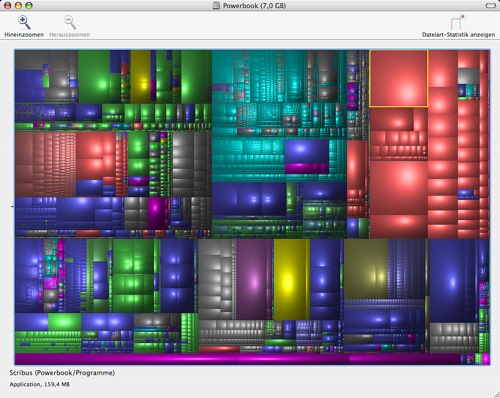I recently came across this article on slimming down an iPhoto library by removing the ‘Original’ photo where a ‘Modified’ one existed.
(That’s one part of what the free iPhoto Diet app does, but it seems that’s not being maintained and doesn’t support recent versions of iPhoto.)
Inspired by the basic three-line shell script in the article I worked up this somewhat more advanced version:
#!/bin/sh -ex
cd ~/Pictures/
du -sh 'iPhoto Library'
dest=$HOME/Pictures/iPhoto-Redundant-Originals-`date "+%Y-%m-%d-%H%M"`
# for all files in iPhoto Library/Modified/...,
# move the corresponding iPhoto Library/Originals/...
# files into a zip archive file
find 'iPhoto Library/Modified' -type f -print \
| perl -pe 's{iPhoto Library/Modified/}{iPhoto Library/Originals/}' \
| zip -9 -T -m $dest -@ 2>&1 \
| grep -v 'zip warning: name not matched'
du -sh 'iPhoto Library'
It has some advantages over the original: the photos are moved into a unique zip file, rather than the trash, and the file hierarchy is preserved, so files can be restored easily.
It could be modified to only operate on a subset of files, such as those older than a certain age.
Extra notes:
- After running this you’ll find that the photo will appear black in the ‘edit view’. That’s not a problem. The ‘edit view’ (which you enter by double clicking on a photo, for example) reconstructs the final image by taking the original and reapplying the edits-so-far. Since the original file has been removed you’ll just see a black image. Don’t worry. In all the other views, and for printing etc., your final modified picture will appear perfectly.
- iPhoto handles automatic rotation of images from cameras that record their orientation by performing a rotation ‘edit’ for you when you import the image. That rotation creates a modified copy, and that’s a common cause of bloat in your iPhoto library. It’s also why you may be surprised to see some originals being archived even though you haven’t editied them. It would be nice if iPhoto had an option to handle rotations destructively.
Usual caveats: this worked for me, your mileage may vary, cross your fingers, read the referenced article (and follow the links in contains), read the comments on them, quit iPhoto, take a backup, wear a tinfoil hat.
